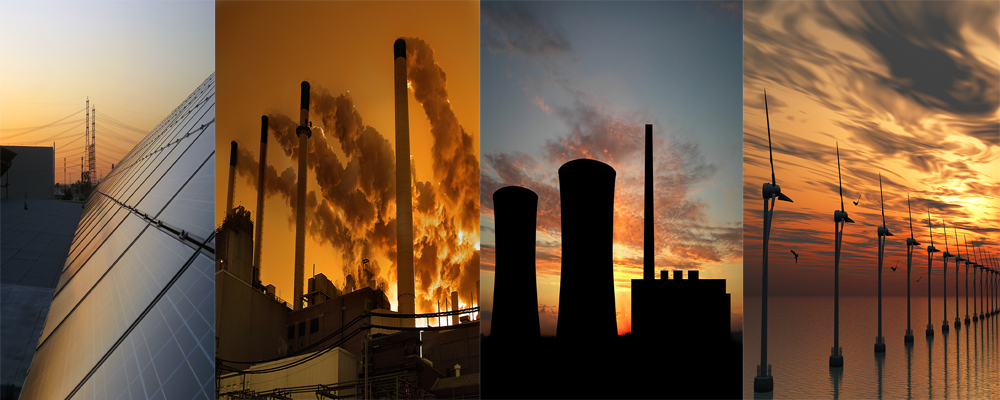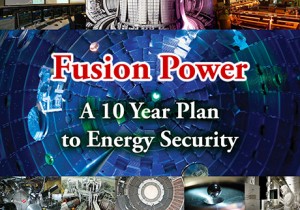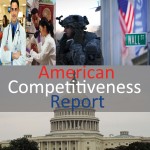
America’s Long-Term Test: Fusion Power
The country is at a moment when long-term thinking is needed more than ever, not the month-to-month mindset that Washington currently lives by.
American competitiveness depends on breaking out of this tactical political mindset in Congress and at the White House in order to focus on long-term goals that will benefit the private and public sector while improving U.S. national security.
It is hard to come up with a better example than fusion power research for such an investment that has clear national security and competitiveness benefits. These benefits include, among others, clean power that offers a safer alternative to nuclear plants, reducing dependence on foreign energy imports and the ability to cut back greenhouse gas emissions. Fusion power can be seen as a litmus test for our country’s ability to do something that is increasingly rare: making long-term plans for the common good.
Some have a hard time buying into fusion power because they perceive a payoff measured in decades and an investment tallied up in the tens of billions of dollars. That is part of the reason why U.S. government support of fusion research is waning at a time when foreign investment in the technology is not. At current spending, it will be the mid-21st Century before a commercially viable U.S. fusion plant is ready, as pointed out in the American Security Project’s latest white paper on fusion power.
Meanwhile, this is a moment when research universities such as the Massachusetts Institute of Technology are seeing graduate-student funding take a hit. Meanwhile China, Japan and South Korea are pressing ahead with their research programs. Germany is also moving forward and has a fusion power facility under construction.
Faced with this kind of buy in by some of the world’s largest economies, the U.S. is falling short of setting out a clear plan for going after the same prize.
ASP Senior Fellow for Energy and Climate Andrew Holland and policy analyst Nicholas Cunningham write that the U.S. needs to set a 10-year fusion power goal of “producing demonstration levels of electric power within a decade.” The cost? $30 billion.
At a time of sequestration, when spending accounts are being scoured for spare dollars, it is no small thing to call for such an outlay. But this is just the kind of commitment that underscores a vision for U.S. national security and global technical leadership.
The benefits to American competitiveness are clear. This kind of “Apollo” project gives STEM workers new opportunities and academic institutions a funding flow needed to bring forward the next generation of researchers. It also is a step toward improving U.S. infrastructure, while providing a boost for research and development efforts around the country. It also lets lawmakers and the White House set a generational goal that addresses many of today’s most challenging energy and foreign policy issues.
That is just the kind of long-term investment in American competitiveness, and a functional political system, needed today.
Check out ASP’s White Paper on American Competitiveness that discusses these issues further:
Read our Blogs and Listen to our other podcasts in the series:
Podcasts:
American Competitiveness – Interview with former Gov. Christine Todd Whitman
Adm. William Fallon (Ret.) on sequestration and American Competitiveness
Sequestration – what’s happening in the States
American Competitiveness and National Security – Podcast
Blog Posts:
Moment near for a ‘grand bargain’ on the debt?
Veteran Unemployment and American Competitiveness
Living with uncertainty in the defense industry
Harvard Business School survey finds more pessimism about U.S. competitiveness
Competitiveness – Education: What most schools don’t teach
Sequestration – damage to American competitiveness
Energy R&D Critical to American Competitiveness








I have submitted a White House petition to fund Fusion Research $100 Billion / 10 years. See http://FusionPetition.us for more information. I just read your 10 year plan white paper. Can there be some collaboration on this? There is definite agreement in direction.
Can you do a press release in support the petition on 4/1? Spread the word about this petition?
I’ve been following ASP for many months. In your white paper you argue about $30 B / 10 years. Do you consider this only for MFE? The MIT researchers claim we need about $80 B. I’m not arguing about the amount, I’ve been involved in enough R&D projects to understand budget numbers this early are only ballparks. I am trying to understand how your numbers were derived.
Please get in touch. I look forward to hearing from you and thank you for your excellent work.
Best Regards,
Dave Doucette
[…] America’s Long-Term Test: Fusion Power […]
[…] America’s Long-Term Test: Fusion Power […]
[…] America’s Long-Term Test: Fusion Power […]
[…] America’s Long-Term Test: Fusion Power […]